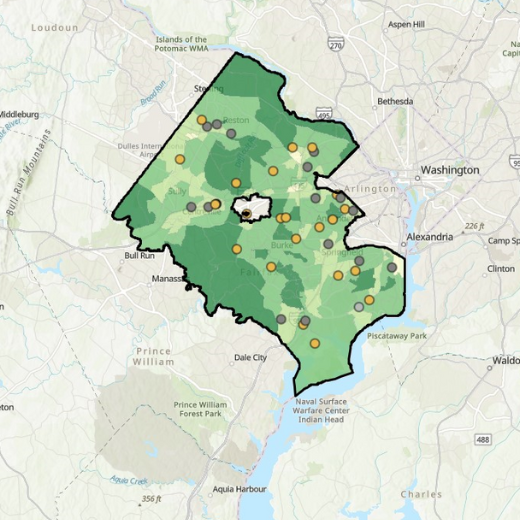Greenhouse gas emissions, such as carbon dioxide, trap the sun's radiation and warm the Earth's surface - which leads to cascading effects on the climate. To lessen the impacts to human health and the environment, Fairfax County has adopted ambitious climate action goals, including energy carbon neutrality across Fairfax County government operations by 2040 and community-wide carbon neutrality by 2050, as outlined in the CECAP, the Community-Wide Energy and Climate Action Plan.
CECAP is a community-driven greenhouse gas emission reduction plan that seeks to involve everyone across the county, from residents and visitors to business and community groups. CECAP focuses on addressing the cause of climate change through emissions reduction. The county’s other climate plan, Resilient Fairfax, helps Fairfax County adapt and become more resilient to changing climate-related conditions such as extreme heat, severe storms, and flooding. Resilient Fairfax focuses on handling the effects of climate change. View our factsheet on the difference between the two plans.
For metrics and data on our progress in implementing these climate action plans, please see the Climate Action Dashboard.



